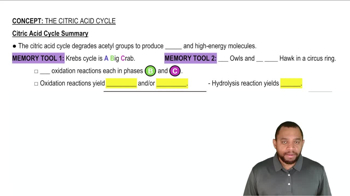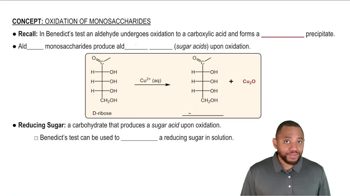Here are the essential concepts you must grasp in order to answer the question correctly.
Citric Acid Cycle
The citric acid cycle, also known as the Krebs cycle, is a series of enzymatic reactions that occur in the mitochondria. It plays a crucial role in cellular respiration by oxidizing acetyl-CoA to produce energy in the form of ATP, NADH, and FADH2. The cycle involves various steps, including the conversion of citrate to isocitrate and the subsequent decarboxylation reactions that release carbon dioxide.
Recommended video:
Citric Acid Cycle Summary Concept 12
Oxidation
Oxidation is a chemical process that involves the loss of electrons from a molecule, which often results in an increase in oxidation state. In the context of the citric acid cycle, oxidation reactions are essential for converting substrates into energy-rich molecules. For example, isocitrate is oxidized to alpha-ketoglutarate, facilitating the production of NADH, a key electron carrier in cellular respiration.
Recommended video:
Oxidation of Monosaccharides Concept 1
Decarboxylation
Decarboxylation is the process of removing a carboxyl group from a molecule, releasing carbon dioxide as a byproduct. In the citric acid cycle, decarboxylation occurs during the conversion of isocitrate to alpha-ketoglutarate and from alpha-ketoglutarate to succinyl-CoA. These reactions are vital for the cycle's function, as they help to release carbon dioxide and contribute to the overall energy yield of the metabolic pathway.
Recommended video:
Naming Dicarboxylic Acids Concept 3
 Verified step by step guidance
Verified step by step guidance Verified Solution
Verified Solution



 :50m
:50m